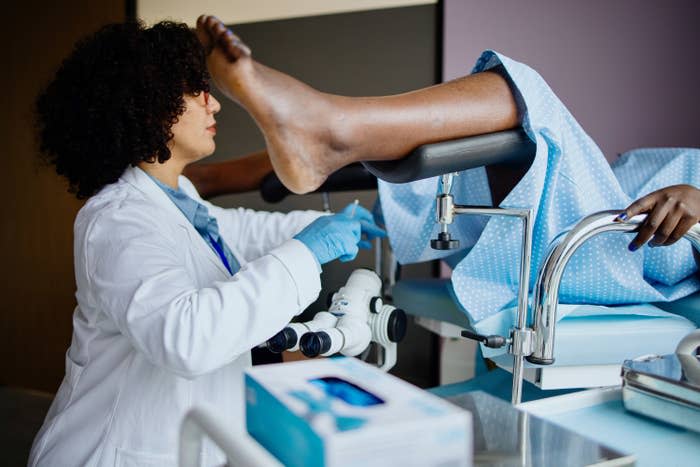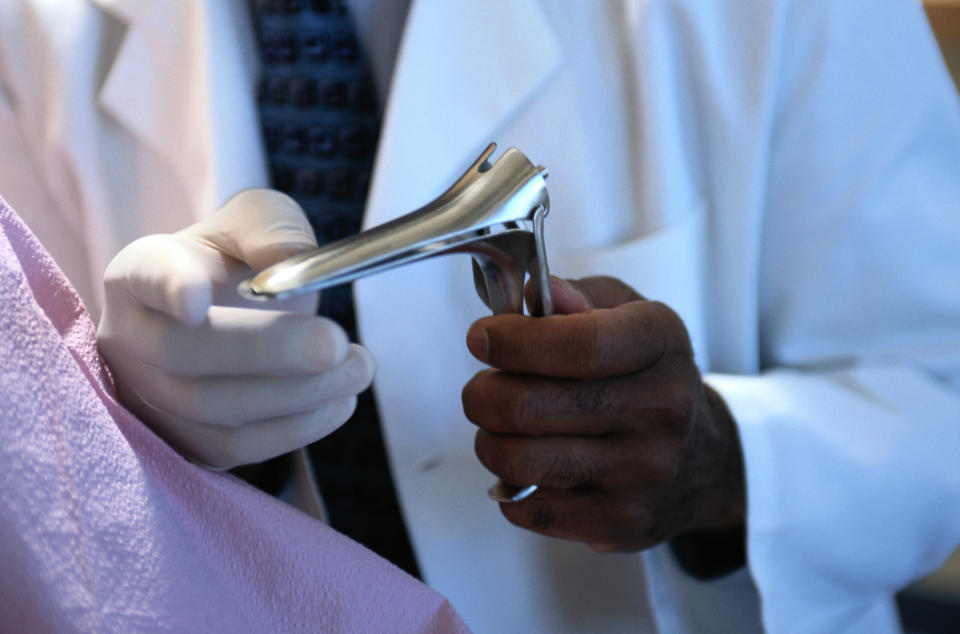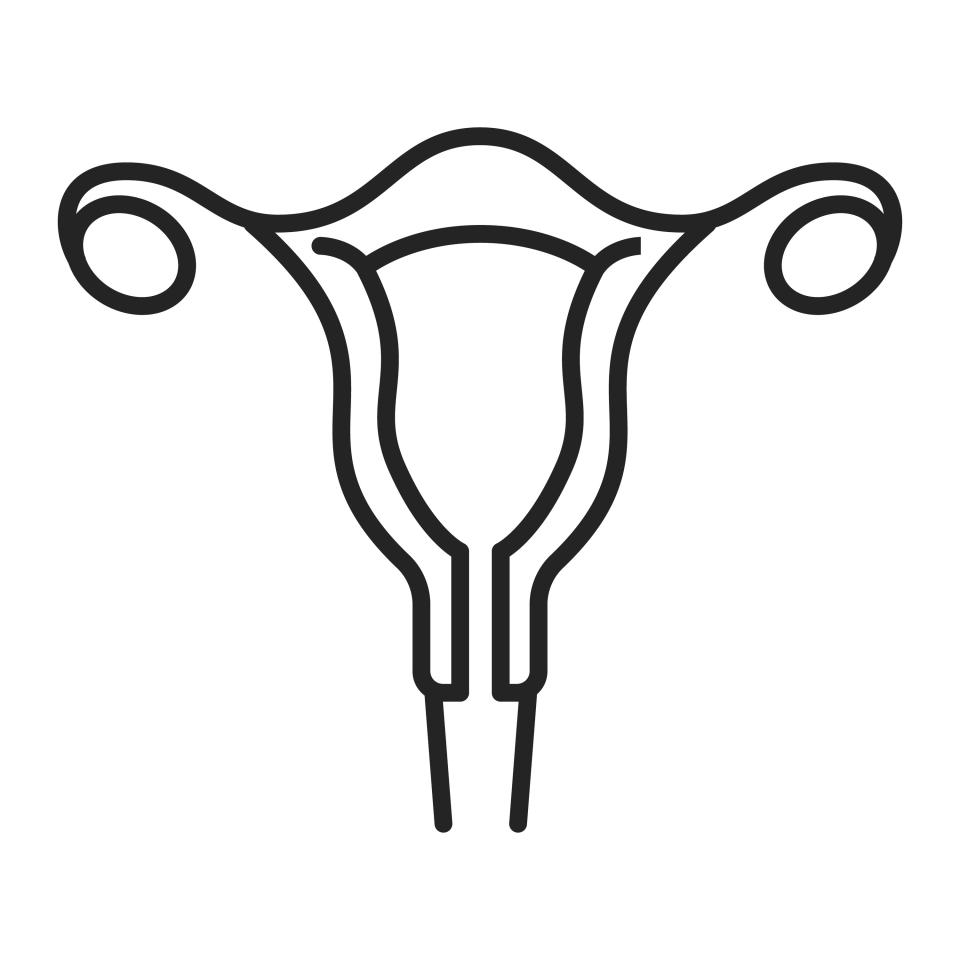"It Should Not Hurt To Get A Pap Smear": This Midwife Went Viral For Her Pain-Saving Pap Smear Tips, And It's A True Relief
Before going into your first appointment, people usually describe Pap smears to first-timers as uncomfortable. "It's uncomfortable," they say, "but it doesn't hurt." However, for many, the opposite is true.

Writer's note: For those who don't know, doctors screen for cervical cancer via a Pap smear, during which they use a speculum to open the vagina and a small brush to collect cervical cells. It's recommended that people with cervixes begin their screenings at 21 years old or when they start having sex.
In truth, the real saying should be: "It should not hurt to get a Pap smear," as 33-year-old midwife Pamela Boatner pointed out in a now-viral video.
@prepared_pregnancy It doesn't take all of that to have a comfortable pap smear. Healthcare shouldn't hurt! #papsmear #papsmears #pap #cervicalcancer #cervicalcancerawareness #midwife #blackmidwife #normalizepapsmears
♬ original sound - The Rapping Midwife Pam
"Hey sis," Boatner said while tapping on the screen to get viewers' attention. "This is your midwife talking. It should not hurt to get a Pap smear. Pay attention, because this is what you need to do to make sure that your next annual exam goes smoothly."

"First thing you need to do is ask for a smaller speculum, because 9 times out of 10, they're using that big birther speculum, and unless you've had a 15-pound baby or have a pelvic disorder, you probably don't need that," she said.

Secondly, Boatner suggested asking "for plenty of lubrication on the speculum, because we're not jamming it in there all raw. We don't have time for that today."

Speaking of speculums, Boatner said, "If they're using a metal speculum, please have them take the 15 seconds to warm up the speculum for you because coldness down there...don't nobody wanna do that either."
You can also "change your position," she said. "Sometimes, laying on your back with your feet up in those little stirrup things is not what's most comfortable for you. Ask them if you can change your feet and put them in a different position. This might be better for you."

And finally, "When they find your cervix, tell them to tell you exactly what position it's in — left, right, or back — so you can remember and tell them for your next Pap smear to make it easier."

Throughout Boatner's comment section, there were two general tones: those who had no idea Pap smears weren't supposed to hurt, and those who didn't know they had options when it came to advocating for themselves in these situations.

To learn more about keeping comfy during Pap smears, I talked to Boatner, who, in addition to her role as a certified nurse midwife, also serves as cofounder of Prepared Pregnancy, an online educational prenatal tool for pregnant people and their families.
Paxeros / Via giphy.com
When asked why she believes so many people are surprised by the fact that they can ask for a smaller speculum or other methods of comfort during a Pap smear, Boatner told BuzzFeed: "Unfortunately, the medical model of care often focuses on the disease or condition and NOT the patient. It is easier for the provider to use a bigger speculum, less lubrication, or keep the patient in one standard position. However, the midwifery model of care centers the woman/patient and her needs. This factors in comfort, education, and past trauma, to name a few."

"When women are ONLY exposed to the medical model of care, they don't even know there are other options," she said. "Many people don't have an accurate picture of what a midwife is or may not have access to one, therefore not knowing these options even exist. I strive to educate people for this reason."
Midwives like Boatner are healthcare professionals trained to assist pregnant people before, during, and after delivery. With the focus of healthcare on the birthing person, Boatner says they are taught differently than doctors whose main objective during a Pap smear is to screen for cancer without necessarily taking the patient's specific pain tolerance into consideration.
"Many physicians have not been trained with patient-centered care in mind, as their main focus is to diagnose and treat the disease," she continued. "This leaves the disease or condition managed adequately, but leaves the patient feeling a disconnect. All physicians are not disease-focused, however, and some seek cultural/LGBTQ/low-risk training yearly to make improvements to their personal practice."
If you do find yourself experiencing pain during a Pap smear and wish to try one of Boatner's tips, she said you can change your position by "laying on your back with fists under your pelvic bone or laying on your back with both feet on the edge of the table rather than in stirrups, and sitting slightly up on the exam table — not fully extended or reclined."

And knowing the location of your cervix can help avoid a painful search: "Just like how most people have hair but the color or texture of the hair can be different, birthing bodies have a cervix but its location is not always in the same position," Boatner said. "For most, it is located directly in the center and posterior of the vagina, and for others it can be displaced slightly off to the right, left, down, or up. This is a variance of normal and is expected to change from person to person."

"With this in mind, imagine how frustrating it can be for a provider to extend an already potentially uncomfortable exam because they are looking for the cervix in the wrong position. Knowing exactly where your cervix is not only empowers your body awareness, but helps both you AND the provider. ... Once the first provider tells you where your cervix is located, take note and remember. It makes the next Pap smear easier."
Knowing your body and being able to advocate for yourself is a necessary part of healthcare, especially today. "In a world where women are losing their voice, rights, and choices, healthcare should not be the venue where people remain silent. It is your body and deserves to be respected," Boatner said. "Learning to self-advocate helps ensure you have pleasant healthcare experiences and ultimately decreases the incidence of healthcare avoidance based on fear or trauma. Better healthcare experiences lead to better outcomes."

"Education is key. Empowerment and confidence can only start with awareness," she said. "For pregnant women and families, take a prenatal education course. We offer these, as well as midwifery consultations, at Prepared Pregnancy. For non-pregnant patients, seek out a provider who spends time educating you, answering your questions, and managing your concerns with YOU as the center of this care. It's easier to advocate to a person you know will listen to you."

